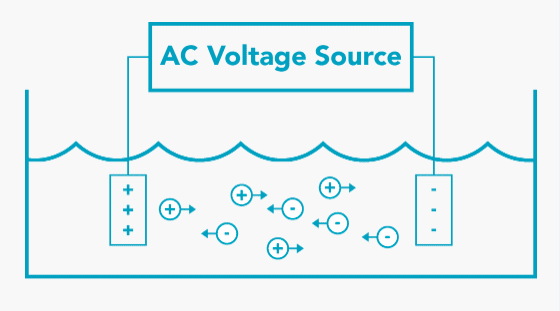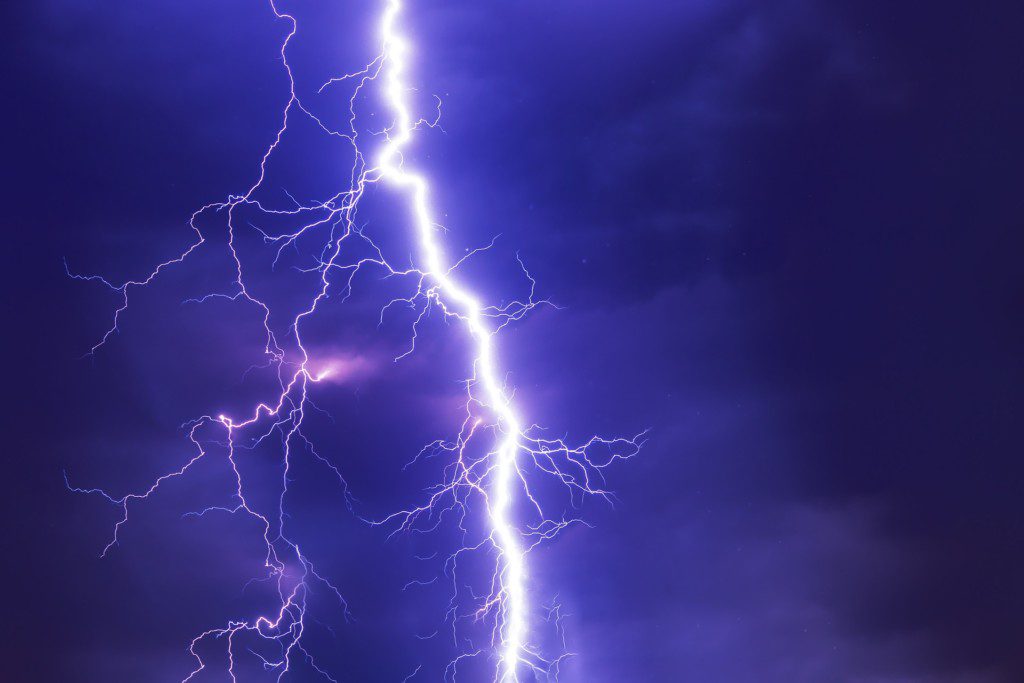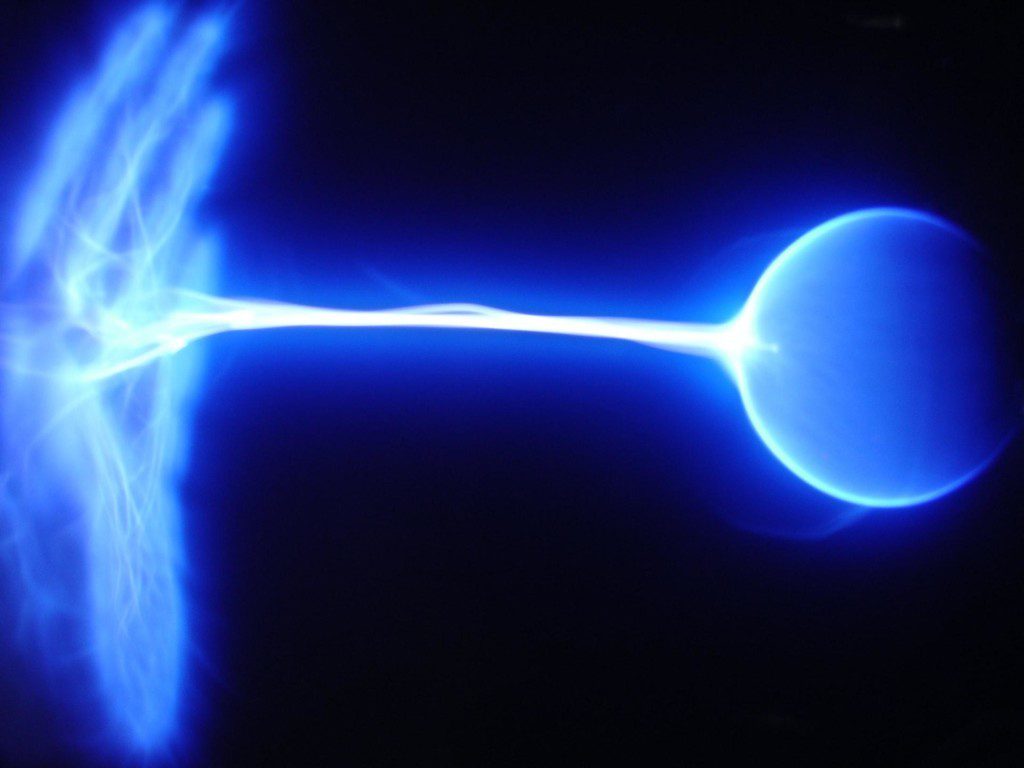While there are many distinct methods that can be used to identify the concentration of contaminants in water, two of the more distinct options include regular conductivity and toroidal conductivity. In general, conductivity involves measuring how effectively water is able to conduct electricity. Toroidal conductivity consists of a reception coil and a transmission coil, which work together to identify how conductive the solution is. The total number of free ions within the water will determine the intensity of the current as well as the conductivity readings.
When free ions are prevalent in the water, the conductivity of the water will increase. High conductivity in water means that more contaminants are present in the water. Whether you’re operating an industrial boiler or cooling tower, it’s important that the water within the system is free from contaminants, which ensures that the system is efficient. Toroidal conductivity differs from contact conductivity in that toroidal sensors don’t cause polarization of the solution, don’t become fouled, and hardly ever require maintenance. While both options have their advantages, toroidal sensors are considered by many to be the most effective tools for measuring the conductivity of water.
As mentioned previously, conductivity sensors are mainly used to detect the concentration of ions in any kind of solution, the primary of which is water. These sensors can be used for numerous applications, the most common of which include:
- Monitoring the reverse osmosis process
- Determining the exact concentration of solids in water
- Controlling the activated sludge process
- Monitoring environmental conditions
- Monitoring the chemical concentration in water
- Protecting boilers and cooling towers from scale and fouling
- Monitoring industrial effluent
These sensors can also be used to maintain the health of aquatic life. Different types of aquatic plants and animals are only able to survive within a certain salinity range. If the concentration of ions dips too low or increases too much, this life may not be able to adapt. Conductivity sensors are essential towards making sure that aquatic ecosystems are in good condition.
This article offers a comprehensive look at toroidal conductivity sensors and why they should be used to measure the conductivity of water.
Two Types of Conductivity
 There are two basic types of conductivity, which include contact conductivity and toroidal conductivity. The main difference between these two types of conductivity involve how the sensors are built. Because of the differences in how the two sensors are constructed, each sensor is ideal for different applications. Your decision on which conductivity sensor to use depends on how conductive the water is, the concentration of dissolved solids in the water, and how corrosive the water is.
There are two basic types of conductivity, which include contact conductivity and toroidal conductivity. The main difference between these two types of conductivity involve how the sensors are built. Because of the differences in how the two sensors are constructed, each sensor is ideal for different applications. Your decision on which conductivity sensor to use depends on how conductive the water is, the concentration of dissolved solids in the water, and how corrosive the water is.
Toroidal conductivity sensors are considered to be the best for measuring water that contains high amounts of contaminants. In the event that the water is corrosive, it’s better to use a toroidal conductivity sensor. The same is true if there is a high concentration of dissolved solids in the water. As mentioned previously, this type of sensor used a receptor coil and a transmission coil to effectively measure conductivity in three simple steps.
Contacting Conductivity
Contacting conductivity sensors are commonly used for the measurement of water that will provide low conductivity readings. When measuring the conductivity of pure or ultra-pure water, it’s highly recommended that you use a contacting conductivity sensor. These sensors are comprised of two separate metal electrodes of titanium or steel. The electrodes come directly into contact with an electrolyte solution. An alternating voltage will then be applied to the two electrodes, which produces an electric field that causes the free ions in the water to move between the electrodes and produce a current.
Since the ions that are present in the water carry charges, the current is referred to as an ionic current. The analyzer that’s contained within the sensor will then take a measurement of the current to effectively calculate the voltage of the water. The total conductivity of the water will be the reciprocal of the voltage. The ionic current that’s produced once the contacting conductivity sensor is placed in the water will depend on how many ions are currently situated in the water as well as the size of the area that the current flows through.
With contacting conductivity sensors that contain two electrodes, these sensors are only able to measure the conductivity of water that contains low amounts of contaminants. The water should also be completely free of any suspended solids and should be non-corrosive. Contacting sensors that consist of four electrodes can be used with water that’s somewhat contaminated. If ultra-pure water is essential for an application in your facility, contacting sensors would be the best option for you. These sensors are commonly used in steam electric power facilities, pharmaceutical plants, and semi-conductor plants.
Inductive Conductivity (Toroidal Conductivity)
Toroidal conductivity is also referred to as inductive conductivity. Unlike contacting conductivity sensors, toroidal sensors can be used in corrosive water, contaminated water, and water that contains high concentrations of suspended solids. The toroidal conductivity process uses a conductive sensor that’s comprised of two metal toroids that are surrounded by a plastic body that’s resistant to corrosion. The two toroids are a drive coil and a receive coil. When using a toroidal conductivity sensor, the sensor will be placed directly in the water.
The analyzer that’s found within the toroidal sensor will then place an alternating voltage on the drive coil, which creates a specific voltage within the water that directly surrounds the drive coil. Once a voltage is created, the ionic current of the water will flow in accordance with how conductive the water is. An electronic current is also induced within the separate receive coil, which is measured by the analyzer. This current also matches the total conductivity of the solution in question. A higher number of free ions in the water will increase the intensity of the current.
Though toroisal sensors work similarly to contacting sensors, the more durable build of toroidal sensors allows them to be used in highly contaminated water. To better understand how a toroidal sensor works, the three basic steps of this system include:
- An oscillator within the toroidal sensor will generate a kind of alternating magnetic field that occurs in the transmission coil. This magnetic field will create a voltage in the water.
- The anions and cations within the water will begin the move, which allows for the creation of an alternating current.
- An additional magnetic field will be induced alongside the alternating current, which allows for a current to flow directly in the reception coil.
This is a simplistic yet highly effective conductivity technique that can provide you with precise readings of concentrated water.
Benefits of Toroidal Conductivity
 There are numerous benefits that come with using toroidal conductivity sensors to measure the total conductivity of water or a similar solution. These benefits include:
There are numerous benefits that come with using toroidal conductivity sensors to measure the total conductivity of water or a similar solution. These benefits include:
- As mentioned previously, toroidal sensors are designed to be used in contaminated water, which means that the coils within the sensor will stand up to corrosion and water that’s comprised of high concentrations of dissolved solids
- The cell constant of toroidal conductivity sensors is measured and certified
- Small systems can be made with a toroidal sensor and transmitter, which makes them suitable for use in a wide range of industrial applications and industries
- While toroidal sensors are meant to be used in highly contaminated water, they cover many different conductivity measuring ranges
It’s important to identify the conductivity of water in any industrial application because a high concentration of contaminants can create many problems. If water isn’t treated and filtered to get rid of contaminants, issues like scaling and fouling may develop. When these issues occur, your system will become less efficient and may eventually malfunction altogether. The malfunction of industrial equipment can lead to costly repairs, which is why it’s recommended that you avoid the deterioration of your equipment in the first place.
What is Scaling?
Scaling is a very common problem that occurs when the water becomes hardened. When high concentrations of contaminants like calcium and magnesium are found in the water, scale formations can develop on the surfaces of boilers, cooling towers, piping, and other equipment. If you don’t treat scaling early on, it will continue to accumulate, which can lead to leaky fixtures, a reduced system efficiency, and blocked water flow.
What is Fouling?
Fouling is an issue that develops when unwanted materials accumulate on surfaces. Fouling can be comprised of non-living substances and living organisms alike. This problem is very similar to scaling and can develop on heat-exchanger surfaces, piping, turbines, and solar panels.
The best way to prolong the lifespans of industrial equipment is to regularly measure the conductivity of the water that flows through this equipment. If you believe that the water contains high amounts of contaminants, it’s recommended that you use a toroidal sensor when measuring the conductivity of the water.





